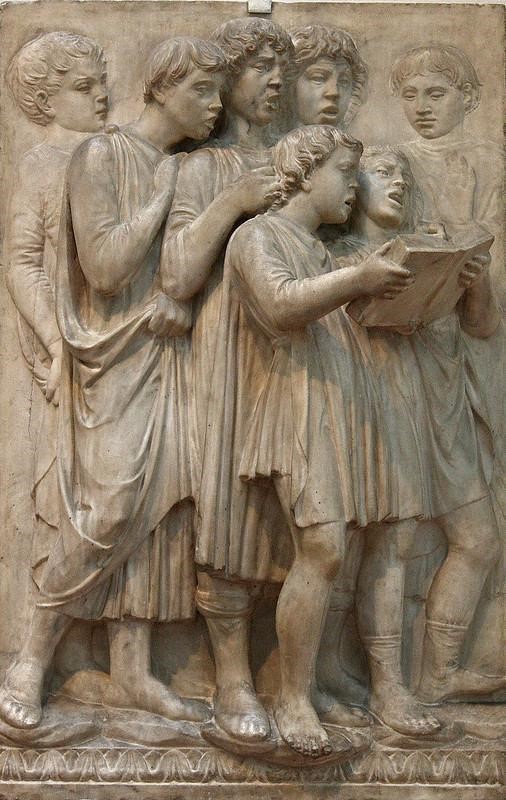History
There is a popular story that the French composer Jean-Baptiste Lully (1632-1687) was the first orchestral conductor and famously, that he died as a result of gangrene from a wound inflicted by accidentally stabbing himself in the foot with his conducting stave during a performance of his Te Deum. It’s a good story, first published nearly 20 years after his death by Le Cerf de Viéville but one that has been misunderstood. (Holman, 2014). Lully was definitely not the first conductor. There is a wide range of evidence from much earlier than the seventeenth century that demonstrates how musicians performing together relied on a leader to keep them in time, as the humorous manuscript illustration in Figure 4.1 shows.
Iconographic Evidence
(Allow around 5 minutes for this activity)
Look at Figures 4.2 and 4.3 What do you notice about the hand gestures shown in these images?

Figure 4.2 Lucca della Robbia, Cantoria (detail) c.1433, Florence Cathedral [credit: “Luca della Robbia, Cantoria from the Duomo” by f_snarfe is licensed under CC BY-NC 2.0 ]

Figure 4.3 Detail of manuscript illustration from the Psalter of Jean, Duc de Berry (Paris, Bib. N., MS. fr. 13091), illuminated by André Beauneveu, 1335–1403 https://commons.wikimedia.org/wiki/Category:Psalter_of_Jean,_Duc_de_Berry#/media/File:Cantate_Domino.jpg
Discussion
Both of these images show choir boys or clerics singing from a book. In each case one figure is pointing to the page and another is tapping a fellow singer on the shoulder to keep time.
Gestures such as those shown in Figures 4.2 and 4.3 are quite common in visual representations of musicians in the from medieval through the early modern period. They tell us that motions of the hand are an important part of musical performance, even if we can’t ‘read’ the gestures in the same way as somebody of the time might have been able to.